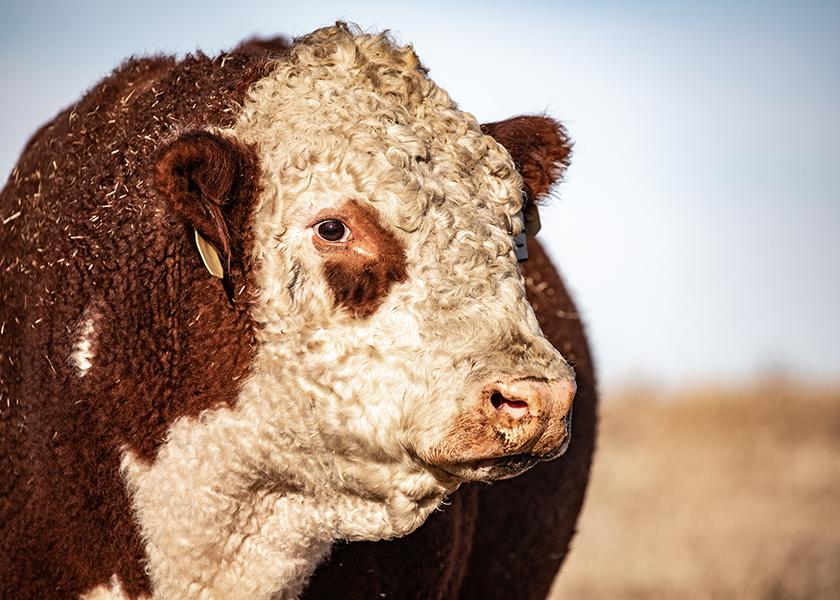Sexten: Evaluating Bull Productivity

Justin Sexten if vice president of strategy for Performance Livestock Analytics.
Few commercial producers consider the process of culling bulls based on productivity. The reason, most bulls ultimately cull themselves due to injury or old age. With the investment needed to purchase new herd sires, few producers look to cull bulls based on calf performance so long as they continue successfully servicing cows.
This approach varies by segment, as seedstock producers tend to turn genetics faster, with few waiting for bulls to cull themselves. Genetic testing has clearly accelerated the genetic advancement process. The ability to evaluate potential at birth ultimately reduces the number of bulls developed to “see how they turn out”.
The value of genetic testing is based on the opportunity to manage the individual animal, a key principle to precision animal management. A goal of precision livestock farming (PLF) is to find ways to manage the individual in a group setting. Most PLF discussion of genetic improvement has focused on the tested generation. Few experiments have considered applying the results to the previous generation.
A recent article in Agriculture by Gary Bennett and co-workers at the USDA Meat Animal Research Center evaluated the ability of genetic testing results to inform management decisions around bull prolificacy. Genetic testing encompasses a wide range of results but in this case the key metric was parentage.
Since multiple bull pastures are commonplace for cow-calf operations this project sought to understand how implementing a genetic test can provide insights into the variation in calves sired by each bull within the pasture or sire prolificacy. For most this data would be a by-product of the goal of knowing the calf’s genetic potential.
Previous data have shown that while multi-bull pastures offer management advantages the distribution of sires the following year are not uniform. The team expanded their scope to look at the repeatability and the impact of key physical factors such as bull age and scrotal circumference on prolificacy.
As you begin pregnancy checking cows this autumn knowing historic sire prolificacy would provide insights as to why cows may be open or calving seasons string out due to unplanned excessive cow to bull ratios. The research team calculated their open cow to bull ratio at 23.6. Calculated, as cows were exposed to AI previously and AI conception rates were used to determine remaining open cows exposed.
Dr. Bennett and team evaluated a wide range of practical multi-bull pasture models, bull turnout ranging from 3 to 11 bulls per pasture, with a cow age range from 3 to 8 year-olds. There were 141 unique breeding opportunities with 38 of the bulls used in just one season, 41 bulls averaged 2.5 breeding seasons and 4 bulls were used all four years of the experiment.
The distribution of calves per breeding opportunity is where the data gets interesting. For 21 of the breeding opportunities (1 bull for a season) 7 calves or less were sired, 3 of those resulted in no calves. On the other end of the curve, 7 breeding opportunities resulted in 43 calves or more, with one of these siring 57 calves.
If we extrapolate the data for illustration, imagine the greatest (57) and least (0) prolific bulls are in the same pasture, on the average we assume they sire about 28 calves each. A herd sire with exceptional genetic and physical traits siring zero calves is of little value if those traits are not transferred. A clear example where using an average assumption would provide a marginal conclusion on a sire's productivity.
Scrotal circumference and breeding age (greater than 2 years) contributed to less than 5% of the prolificacy prediction and didn’t influence repeatability. As one might expect, prolificacy increased as bull age advanced. The authors suggested once a bull passes a breeding soundness exam the usefulness of individual bull measurements to indicate prolificacy is marginal at best.
Repeatability of prolificacy was high, suggesting from one year to the next prolific sires should remain prolific. What the team was unable to evaluate was the impact of implementing selection pressure for prolificacy. Dr. Bennett’s team did suggest implementing management changes to reduce the number of bulls used in cases where prolificacy was high will remain limited by the risk of bull injury or death.
Perhaps we cannot reduce the number of bulls turned out, but consider the risk we take turning unknown or marginally prolific sires out in multi-bull pastures as few operations have variable cow to bull ratios based on bull prolificacy.
The understanding and implementation of bull prolificacy will continue to develop. For those using genetic testing to manage the current calf crop these data highlight an opportunity to look back at how productive each bull in the battery has been.







